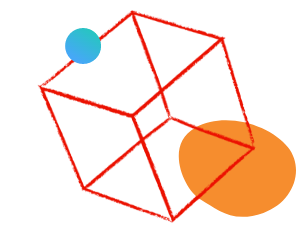What’s the best way in AJO to pull a list of customers who received a specific journey message (email or SMS)?

- Mark as New
- Follow
- Mute
- Subscribe to RSS Feed
- Permalink
- Report
Hi,
I’m struggling to get an accurate count of customers who actually received a specific journey message. I tried creating an audience using the journey version ID or journey action ID, but the numbers are always wrong. I was told this happens because if the journey has multiple comms (e.g., 2 emails + 3 SMS), customers who receive more than one get counted multiple times.
I’m working with both one-off campaigns and journeys that trigger regularly (e.g., every 15 days), and I just need a clean list of customer IDs who received the communication.
Is running a Query Service query against the tracking datasets (email/SMS) really the only reliable way to do this? And is there any way to turn this into a reusable audience in AEP?
I have access to SFTP and using that to get csv file..
Any advice or examples would be appreciated.
Views
Replies
Total Likes

- Mark as New
- Follow
- Mute
- Subscribe to RSS Feed
- Permalink
- Report
Hi @ShushmitPa
You need an accurate, deduplicated list of customers who received a specific journey communication and want to turn this into a reusable audience in AEP without relying solely on tracking datasets.
Solution: Log Custom Experience Events for Each Communication
Instead of querying raw tracking datasets (which are great for reporting but not for segmentation), you can create a custom schema and dataset to capture communication delivery events. This approach makes the data actionable inside AEP and reusable for downstream journeys.
Step 1: Create a Custom Experience Event Schema
- Base class: XDM ExperienceEvent: ORG_Journey_Action
- Add a custom Field Group (e.g., _tenantId.journeyCommunicationAction) with fields like:
- journeyCommunicationAction.journeyName – Human-readable name (e.g., "Abandoned Cart").
- journeyCommunicationAction.channel – email, sms, push, etc.
- journeyCommunicationAction.subject – Email subject line.
- journeyCommunicationAction.offerId / offerName – If offers are included.
- journeyCommunicationAction.messageName – Friendly name for the message.
- journeyCommunicationAction.sendDateTime – When the comm was sent.
- eventType – e.g., "journeyEmail/SMS.sent".
- _id – Unique UUID for deduplication.
- Include identityMap with primary identity (email, phone, ECID, etc.).
- Enable it to profile
Step 2: Create a Dedicated Dataset
- Type: Experience Event dataset: ORG_Journey_Action
- Bind it to the schema above.
- This dataset will store all communication events triggered from journeys.
- Enable it to profile
Step 3: Create an HTTP API Ingestion Flow (Streaming Pipeline)
Before adding the custom action, you need a way to ingest the event data into AEP:
- Create an STPL (Source Template) request to define the ingestion pipeline.
- Configure:
- Source: HTTPS API endpoint that will receive the payload from AJO.
- Target Dataset: The dataset created above: ORG_Journey_Action
- Mapping: Map JSON fields from the custom action payload to schema fields.
- This creates a streaming ingestion pipeline so that every event from AJO flows directly into AEP in near real-time.
- Test ingestion with sample payloads to ensure data flows correctly and schema mapping is valid.
Step 4: Add a Custom Action in Each Journey Step
- After each Email/SMS action, add a Custom Action that POSTs a JSON payload to your ingestion endpoint.
Step 5: Build Audiences in AEP
Once events are ingested:
- Use Segment Builder with conditions like:
- eventType = "journeyEmail/SMS.sent"
- communication.journeyName = "Abandoned Cart"
- communication.channel = "email"
- Within last X days
- This gives you a deduplicated audience because segmentation works at the profile level.
Step 6: You can event Trigger Subsequent Journeys if you have such a use case
- Create a Unitary entry event that listens for:
- eventType = "journeyEmail/SMS.sent"
- communication.journeyName = "Abandoned Cart"
- Add a Wait step (e.g., 7 days), then check for purchase or redemption before sending the next comm.
Why This Works
- Creates a single source of truth for communication delivery.
- Enables reusable audiences and downstream triggers.
- Works for both one-off campaigns and recurring journeys.
Please review and let me know if this helps.
Thanks a lot.
Sashanka B
Views
Replies
Total Likes

- Mark as New
- Follow
- Mute
- Subscribe to RSS Feed
- Permalink
- Report
@ShushmitPa Yes, you can set up an audience to target customers who have received communication from a specific journey or campaign, and a query service is not required for this. For example, you can create an audience of customers who have successfully delivered a message from a journey in the last 30days. This method can also be applied to campaigns and the SMS channel.


- Mark as New
- Follow
- Mute
- Subscribe to RSS Feed
- Permalink
- Report
Hi @SatheeskannaK
The audience-builder option looks much simpler, but I’m still struggling because when a journey has multiple comms (e.g., 2 emails + 3 SMS), I end up with inflated counts due to multiple events per profile. Is there a clean way to dedupe within the audience builder without relying on Query Service? Please see SS below
I’m mainly dealing with:
one-off campaigns
journeys that fire periodically (e.g., every 15 days)
…and I just need a reliable way to get unique customers who actually received the comm.
Do you recommend sticking with the simpler audience-builder method for this use case, or is the custom event logging approach the more reliable long-term solution?
Thanks again, really appreciate the help.
I report section showed around 1m received email or SMS from the journey but when I create the audience it goes ove 2.4 m, during exporting the audience using sftp in mapping I even selected deduplication to remove any duplicates but no change:
Note: I have tried it with Message execution id, Journey version id, but count remains same
If I remove feedback status, the count actually drops but not sure if its the right way:
Views
Replies
Total Likes

- Mark as New
- Follow
- Mute
- Subscribe to RSS Feed
- Permalink
- Report
any idea why this is happening @SatheeskannaK ?
Views
Replies
Total Likes
Views
Likes
Replies







